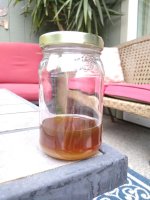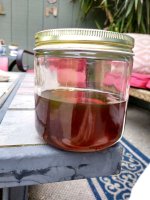am_dew
Advanced Contributor
Forgive the long post. This is for my Volvo Penta AQ130C four cylinder push rod engine, which was discovered to have water in the oil a few months ago when I went to do the annual oil change.
Water in Oil
Comments welcome, especially from those who may be familiar with the Volvo AQ130C, or similar, Volvo push rod engines from the 70's.
Water in Oil
- Engine had not been run since was worked on by a mechanic last Fall to resolve an alternator issue.
- I drained the water from both engine drain cocks last Fall before any freezes. I live in Sacramento, CA so we do not get hard freezes and the boat is also covered with a standard boat cover and a tarp to keep the rain out, and the engine is covered by a standard box style engine cover that is lined with thin insulation. So, engine damage due to freezing is highly unlikely.
- Discovered milky oil when I drained oil from pan after running the engine while boat was on trailer for a while to warm up the oil. Watery oil also found when I removed the oil filter.
- Ran engine for about 5 minutes while boat was on the trailer to warm up the oil prior to my annual spring oil change. Engine seemed to run fine while idling at no more than 2000 RPM. When I drained the oil, I discovered it was milky as was the oil in the oil filter.
- Removed water pump…no signs of water intrusion on the engine side of the pump and no sign of oil in the pump cavity. Removed impeller and then filled pump cavity with water dyed blue while the pump was sitting on a cup to see if any water would leak out of the pump cavity. No leakage after letting it sit for more than 24 hours.
- Removed two end caps from oil cooler and then removed oil cooler insert. Insert showed signs of watery oil and watery oil came out of oil cooler body. O-Rings on each end of insert looked OK but bought new ones anyway.
- Cleaned oil cooler insert by soaking it in warm soapy water. Checked insert tubes for blockage – all are fine.
- Placed cooler end caps with old O-rings on to each end of the cooler insert and put long bolt through the insert and then snugged up bolt so the end caps were solidly attached to cooler insert. Then I attached a hose to the copper tube leading to the cooler’s intake end cap. I then applied low water pressure to hose, looking for water leaks coming from the insert. No leaks detected.
- Re-assembled oil cooler using new O-rings on insert and one new rubber seal on copper tube feeding the oil cooler. The other seals for the copper tubes were all fine.
- Re-installed waterpump and new impeller.
- Filled with new oil and installed new filter.
- Checked oil level on dipstick…full.
- Ran engine, with water being sucked from a bucket off the side of the boat. Idled it for about 5 minutes…1000-2000 RPM max.
- Drained about 4 oz of oil from drain tube into a clear jar…appears to be water in it but will let it sit overnight and see what it looks like. Update: There is certainly some water in the bottom of the jar.
Comments welcome, especially from those who may be familiar with the Volvo AQ130C, or similar, Volvo push rod engines from the 70's.
Last edited:



